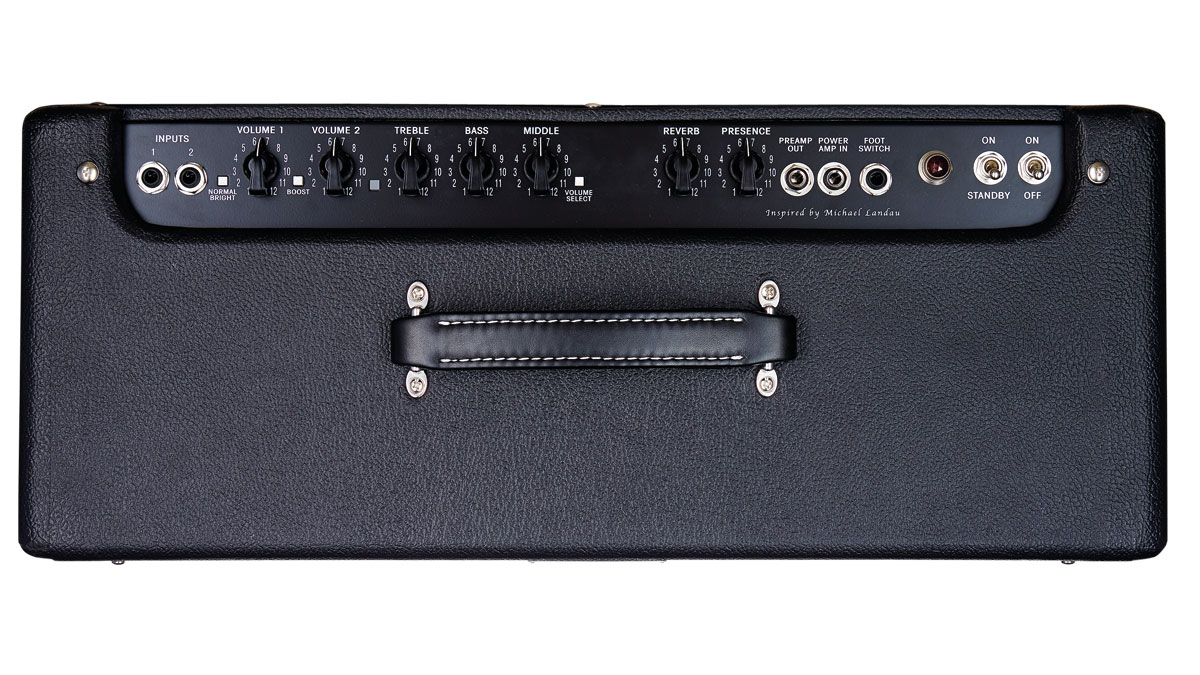MusicRadar Verdict
One great clean channel makes this an ideal amp for pedal users.
Pros
- +
Fantastic clean channel.
Cons
- -
Cumbersome and expensive.
MusicRadar's got your back

Fender Hot Rod Deville ML

Fender Hot Rod Deville ML
Michael Landau is one of the most prolific session players to come out of the LA studio scene, with an almost endless list of album credits for some of the world's most revered artists, including Pink Floyd, Miles Davis, Joni Mitchell and James Taylor, to name but a few.
Landau started playing guitar at 11, and by the age of 16 was already an established part of the LA club scene, touring the west coast with Yellowjackets' founders Robben Ford, Russell Ferrante and Jimmy Haslip, before joining Boz Scaggs for a world tour in 1977.
Today, in addition to engineering and producing for many other high-profile artists, Landau fronts his own group and has released several solo albums, all of which are full of eclectic and sometimes challenging music that demonstrates the depth and breadth of his astonishing talent.
A long-time Fender aficionado, Landau was recently honoured with a signature guitar and now Fender has released the 'Inspired by' Hot Rod DeVille ML 212 combo. Landau's stage rig has incorporated a pair of DeVilles for several years, and the signature version incorporates some significant tweaks.
"The ML is typically Fender: nicely built and styled."
The ML fits into the same cabinet as a regular 2x12 DeVille combo; it's nicely proportioned and one of the most compact 2x12s you can buy thanks to the diagonally- arranged loudspeakers. However, that doesn't escape the fact that it's also very heavy, quite a bit more than a regular DeVille thanks to uprated transformers and Celestion G12 V-Type loudspeakers.
In the standard DeVille style there's just one carry strap on the top, but that's not really enough for a box of this weight. The tweed styling of the regular DeVille has been replaced by black vinyl with a silver grille cloth and a white-on-black control panel instead of polished chrome.
Inside the DeVille's tray chassis, the electronics are standard modern Fender with a pair of PCBs holding most of the components, including the valve bases. Fender has chosen two premium Sovtek 12AX7WCs for the preamp; both valves are held in a special foam anti-shock collar to reduce any acoustic interference and extend their life.
Possibly the ML's biggest difference is the lack of a drive channel. Instead, the DeVille ML is based on the original's clean channel, with a footswitchable dual-master volume arrangement that includes a footswitchable pre-set boost on volume two.
There's a conventional shared bass, mid and treble EQ section, along with global controls for presence and reverb. Landau is an effects user with a fairly simple but much evolved wet/dry setup, and his overdrive effects often come from pedals. To aid this, there's a simple series effects loop with a pair of send/return jacks on the top panel. Overall, the ML is typically Fender: nicely built and styled.
Feel & Sounds
The DeVille ML's clean sound is big, warm and airy, with excellent headroom thanks to an uprated power supply and high-efficiency Celestion drivers. The treble is bright, but not too piercing, the midrange is warm and balanced with no nasal peaks, and the bass is fat and well-defined.
The decibel levels are way up on a standard DeVille, to the point that most players will have difficulty taking the volume controls past four, let alone engage the boost, which adds around 6dB of extra volume! There's just a hint of an edge and some mild compression with the volumes up to around one o'clock, at which point the DeVille ML is loud enough for festival stages. The reverb is good but not great - it's fairly free of noise but there's a high-mid sheen to it that doesn't complement the amp's warm tones so well.
Signature models can sometimes turn out to be two-edged swords: association with a high- profile and well-respected artist is a proven selling tool, but ultimately, a product has to have a purpose and be practical if it's going to sell. The DeVille ML is a superb platform for pedals, no doubt there. However, it's also cumbersome, expensive and somewhat limited compared with the standard model.
The clean sound is undeniably great but we can't help but wonder, what if Fender had taken the concept further? For example, a parallel main loop with a mix control, a series loop in front of the preamp, both switchable, and a quality digital reverb to rival the best outboards, could all add up to a serious stage tool for many pedalboard drivers.
Nevertheless, professional users and dedicated amateurs should check out the Hot Rod DeVille ML - if you use pedals, it could be your perfect choice.
“Built from the same sacred stash of NOS silicon transistors and germanium diodes, giving it the soul – and snarl – of the original”: An octave-fuzz cult classic returns as Jam Pedals resurrects the Octaurus
What’s the buzz? Meet Yellowjacket, Cherry Audio's recreation of EDP’s trend-setting Wasp from 1978
“A fabulous trip through all eight songs by 24 wonderful artists and remixers... way beyond anything I could have hoped for”: Robert Smith announces new Cure remix album









